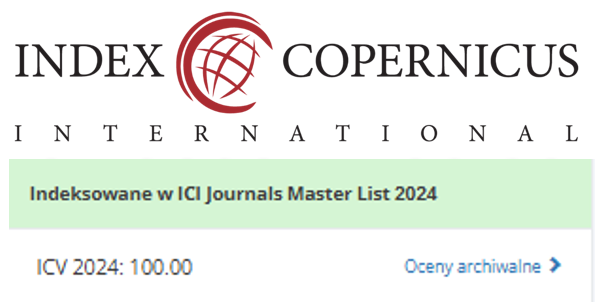Guidelines for Scoping Review
- When submitting, the content explanation and writing guidelines in this template must be removed.
- Articles submitted to the JANH should not exceed 5000 words for the main text, including abstract, tables, and references. But, in some cases, 7,000 words are allowed if needed.
- Important to note: Use Mendeley Desktop (Download for Free) as a reference management tool.", following the APA 7th edition style. The reference list should include at least 20 references, with sources no older than 5 years.
Title
- A clear and specific title containing key terms, subjects, methodology, and research significance (e.g., improvement, reduction, impact, effectiveness, efficacy), with a length of 10–16 words. The title should contain a descriptor that best describes the type of review, such as: ‘Scooping Review”.
Abstract
Background: One or two sentences of background, the purpose of the study
Methods: Design, Data Sources, include search dates, Review Methods, eligibility criteria, sources of evidence, charting methods,
Result: Present the identified themes and subthemes derived from the mapping results.
Conclusion: Present the main research conclusions and provide recommendations based on the findings.
Implications for clinical practice: highlight how research findings can be applied to improve patient care, clinical decisions, and healthcare policies.
Keywords: 3–6 words or short phrases allowing proper and convenient indexing.
(For keywords of an abstract)
- Click MeSH on Demand
- Authors Copy and paste the abstract to the Table of MeSH on Demand,
- Click Search.
- Next, you will see some blocked words, which can be used as keywords.
Introduction
- Include background and rationale, conceptual or theoretical context, international relevance of the topic, and aim (Describe the current state of knowledge and its uncertainties.
- Articulate why it is important to do the review.
- If other systematic reviews addressing the same (or a largely similar) question are available, explain why the current review was considered necessary. If the review is an update or replication of a particular systematic review, indicate this and cite the previous review.
- If the review examines interventions' effects, briefly describe how the intervention(s) examined might work.
- Describe the rationale for the review in the context of what is already known. Please explain why the review questions/objectives lend themselves to a scoping review approach.
- Provide an explicit statement of the questions and objectives being addressed with reference to their key elements (e.g., population or participants, concepts, and context) or other relevant key elements used to conceptualize the review questions and/or objectives.
Methods
Protocol And Registration (Optional)
- Indicate whether a review protocol exists; state if and where it can be accessed (e.g., a Web address); and provide registration information, including the registration number if available.
Eligibility Criteria
- Specify characteristics of the sources of evidence used as eligibility criteria (e.g., years considered, language, and publication status) and provide a rationale.
Information Sources
- Describe all information sources in the search (e.g., databases with dates of coverage and contact with authors to identify additional sources) and the date the most recent search was executed.
Search
- Present the full electronic search strategy for at least 3 database, including any limits used, such that it could be repeated.
Selection Of Sources of Evidence
- State the process for selecting sources of evidence (i.e., screening and eligibility) included in the scoping review
Data Charting Process
- Describe the methods of charting data from the included sources of evidence (e.g., calibrated forms or forms that the team has tested before their use, and whether data charting was done independently or in duplicate) and any processes for obtaining and confirming data from investigators.
Data Items
List and define all variables for which data were sought and any assumptions and simplifications made.
Critical Appraisal Of Individual Sources Of Evidence
- If done, provide a rationale for conducting a critical appraisal of included sources of evidence; describe the methods used and how this information was used in any data synthesis (if appropriate).
Expert Opinion
- refers to insights or perspectives from professionals in the field to validate findings, identify gaps, or provide context to the mapped literature.
Synthesis Of Results
- Describe the methods of handling and summarizing the data that were charted.
Results
Selection Of Sources Of Evidence
- Give numbers of sources of evidence screened, assessed for eligibility, and included in the review, with reasons for exclusions at each stage, ideally using a flow diagram.
Characteristics Of Sources Of Evidence
- For each source of evidence, present characteristics for which data were charted and provide the citations.
Critical Appraisal Within Sources Of Evidence
- If done, present data on critical appraisal of included sources of evidence
Results Of Individual Sources Of Evidence
- For each included source of evidence, present the relevant data that were charted that relate to the review questions and objectives.
Synthesis Of Results
- Summarize and/or present the charting results related to the review questions and objectives.
Discussion
Summary Of Evidence
- Summarize the main results (including an overview of concepts, themes, and types of evidence available), link to the review questions and objectives, and consider the relevance to key groups.
Limitations
- Discuss the limitations of the scoping review process
Relevance to Clinical Practice
- Improvement in Patient Care – How the findings enhance diagnosis, treatment, or patient outcomes.
- Guidance for Clinical Decision-Making – Impact on healthcare professionals' choices and interventions.
- Enhancement of Clinical Protocols – Potential updates to guidelines, procedures, or best practices.
- Efficiency and Safety – How the research improves workflow, reduces risks, or enhances patient safety.
- Policy and Education Impact – Influence on healthcare policies, staff training, or professional development.
Conclusion
- Provide a general interpretation of the results with respect to the review questions and objectives, as well as potential implications and/or next steps.
- This should not be a summary/repetition of the findings.
References
- Use Mendeley Desktop (Download for Free) as a reference management tool.
- Reference writing style: APA 7th Edition.
- Reference minimum of 20 references from reputable articles or journals, published within the last 5 years, with at least 80% from journals.
- Provide the DOI or URL for each cited article.
- Do not use abstracts as references.
- Cite unpublished manuscripts as "unpublished observations" with written permission. Papers accepted but not yet published should be marked as "Forthcoming" with the journal name.
- Avoid citing "personal communication" unless essential. If necessary, include the person's name, date, and obtain written permission.
- Click Here[Exemple of References]

















